
Best destinations to travel to Oceania in August

The month of August in Australia is a kind of transition period, in which the heart of winter gradually approaches spring, so the weather at the beginning and end of the month can be very different.
If you're looking for a destination to travel to during this time of year, the biggest deciding factor may be the type of holiday you're looking for, as some destinations are geared more towards indoor and city experiences, while others emphasize enjoying nature and the outdoors.
The month of August also tends to be less rainy than most other months, and although lower temperatures are a given, the advantage of lower humidity can make other typically sweltering parts of the hot Australian climate much more bearable.
Taking these factors into account, where are the best places in Australia to travel to in August? Here is our list of the 6 best places to visit in August.
Table
1. Flinders Ranges and Outback, SA
- Average temperatures : 7.6 degrees Celsius - 21.0 degrees Celsius
- Ideal for: Adventurous travelers looking to get outside
- Top things to do: Wilpena Pound tour or scenic flight; self-driving 4x4 or excursions; Umoona Opal Mine; Coober Pedy opals; ride the Pichi Richi railway; walk the Heysen trail; stay at Arkaroola Wilderness Sanctuary
While most people plan a trip to South Australia to orient themselves around world-class wineries, Eurocentric architecture and glimpses of gorgeous coastlines, there's one element to the state that turns this popular conception on its head while being surprisingly Beautiful in its own right: the South Australian outback.
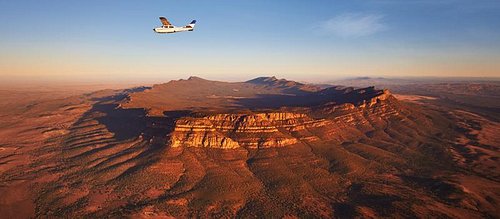
South Africa's Outback, a word typically more associated with the Northern Territory, has much to offer the adventurous traveler, as cooler months such as August help alleviate the heat of the state's interior.
It is an ancient, sunburnt landscape that is home to a number of natural wonders and experiences, while remaining relatively unvisited. Therefore, it is an excellent option for those looking to escape the crowds and disconnect. It all starts by hitting the road and venturing north from Adelaide (a four-wheel drive vehicle is not required, but helps eliminate many potential obstacles to continuing the adventure) for about 200km before the signs appear. first peaks of the extensive Flinders Ranges.
The Flinders serve as a sort of natural (and huge) signpost into Outback SA, and offer an almost endless range of trails and off-road paths on which to explore, highlighting the popular Skytrek route which winds through a mix of striking mountain valleys, wooded streams and plenty of historical points of interest from the ancient inhabitants.
Liveability is something that is really lacking in the current Flinders Ranges - the largest town is Hawker, with a population in the hundreds - and as such, those seeking elaborate comforts and conveniences may find the region lacking. For most, however, this is part of its charm and is a necessary commitment to experiencing some of South Australia's most unique places.
The main one is the huge natural amphitheater of Wilpena Pound, which juts out of the landscape about 55 km from Hawker.
With a series of peaks that embed its more or less circular shape and an interesting interior that can be explored both through a series of hiking routes and on an impressive scenic flight that ranks among the best in Australia, it is the main point of interest of the region for many first-time visitors.
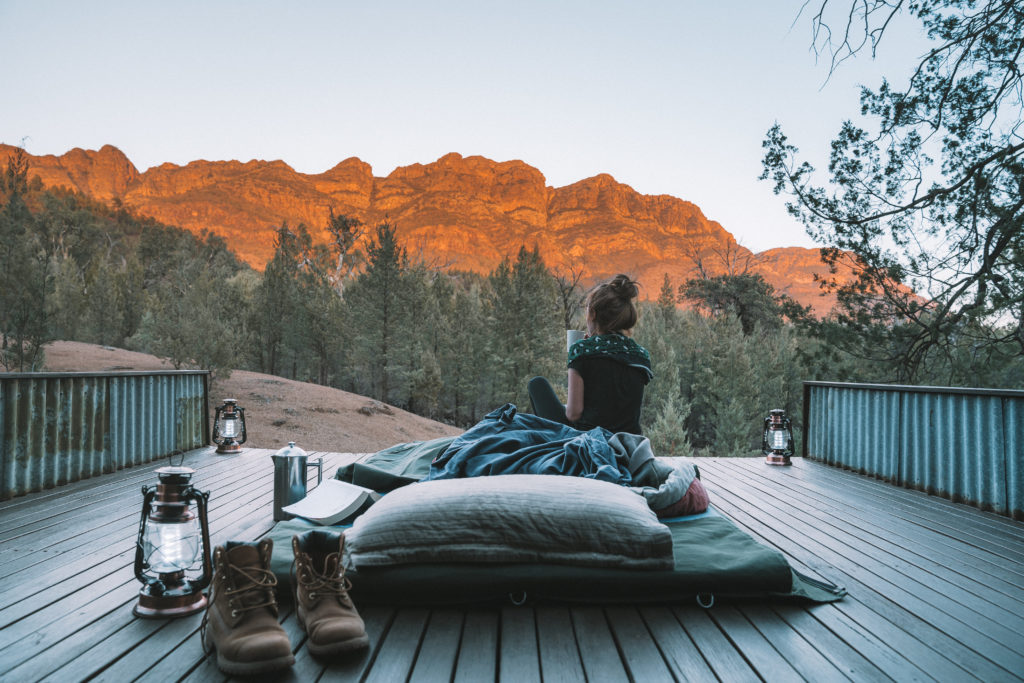
The rest of the Flinders Ranges is no slouch either, with plenty of other features ranging from Aboriginal sites, huge gorges and even splashes of bright color and flora, especially after the recent rains.
Of course, South Australia's Outback doesn't stop at the Flinders Ranges; Continue north and you'll find the Arkaroola Wilderness Sanctuary, the vast, salty expanse of massive Lake Eyre and, to the northwest, the iconic outback town of Coober Pedy, with its famous mix of opals and underground life.
Living underground is a way of life in this mining town, as hot days make underground homes a much cooler and more comfortable alternative. Therefore, it is logical that one of the main attractions of the city is a true showcase of the underground world, since the Umoona opal mine and museum have become a complete tribute to history, industry, indigenous culture and the innovative construction techniques of the region.
Since Coober Pedy was a city built on opals, the gemstones feature prominently in the attraction; The experience begins with a short video detailing how they are formed, and then an example of a typical underground dwelling, known as a dugout, is shown.
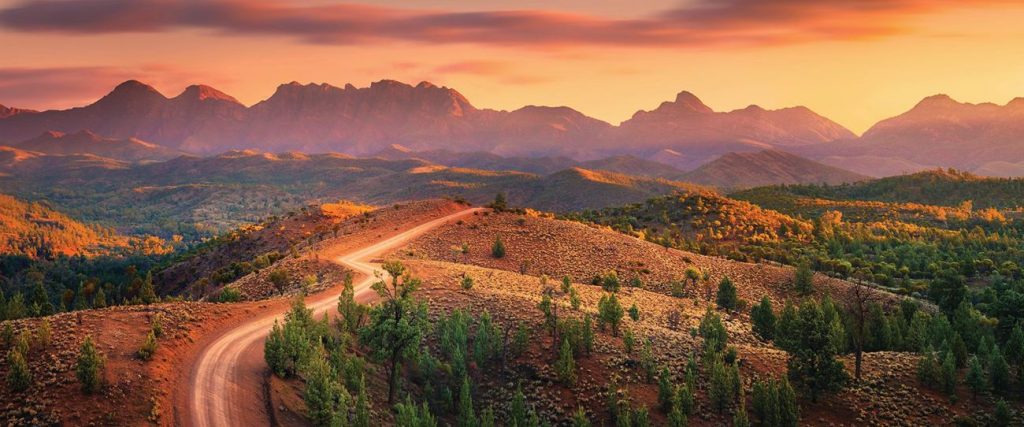
Visitors have the chance to walk through sections of the mine and absorb the detailed information at their own pace, while there is also beautifully produced material telling the Aboriginal perspective on the region and its opals. And of course, any visit to Umoona should conclude with a bit of gawking at some of the spectacular opal-oriented jewelery on display, available at competitive prices and in striking colour.
Add to that the ability to take other incredible journeys on foot or by train, and a trip here expands even further. The Heysen Route, part of one of Australia's biggest walks, covers parts of the region, and although the entire route takes around 60 days to walk, even a single day on the route can provide an insight into raw Australian wilderness that relatively few get to experience.
SA's Outback is also home to two magnificent train journeys: the Pichi Richi Railway, which meanders at a leisurely pace through the Pichi Richi Pass in the Flinders Ranges between March and November, and the more epic and symbolically Australian Ghan Railway Journey, which connects Adelaide to Darwin for four days.
In total, the region is large enough, both in scale and scope, to form the backbone of a series of incredible itineraries; Leave the comforts at home and you'll end up with one of the purest ways to embrace raw Australia with a trip to the SA Outback.
2. Fraser Island, Queensland
- Average temperatures : 14.1 degrees Celsius to 25.0 degrees Celsius
- Ideal for : Relaxing island getaways and those who don't mind swimming in colder waters
- Best things to do : Visit Lake Mackenzie; the Champagne pools; Eli Creek; 75 Mile Beach; the shipwreck of Maheno; Central Station rainforest
The world's largest sand island lies off the coast of Hervey Bay in Queensland and is famous for its mix of natural spectacles ranging from multi-coloured sands to rare wildlife and ancient rainforests.
Given its ease of access and enormous diversity, Fraser Island remains a notably underrated Australian tourist destination and is often a favorite of Queenslanders and beyond who are aware of its many offerings.
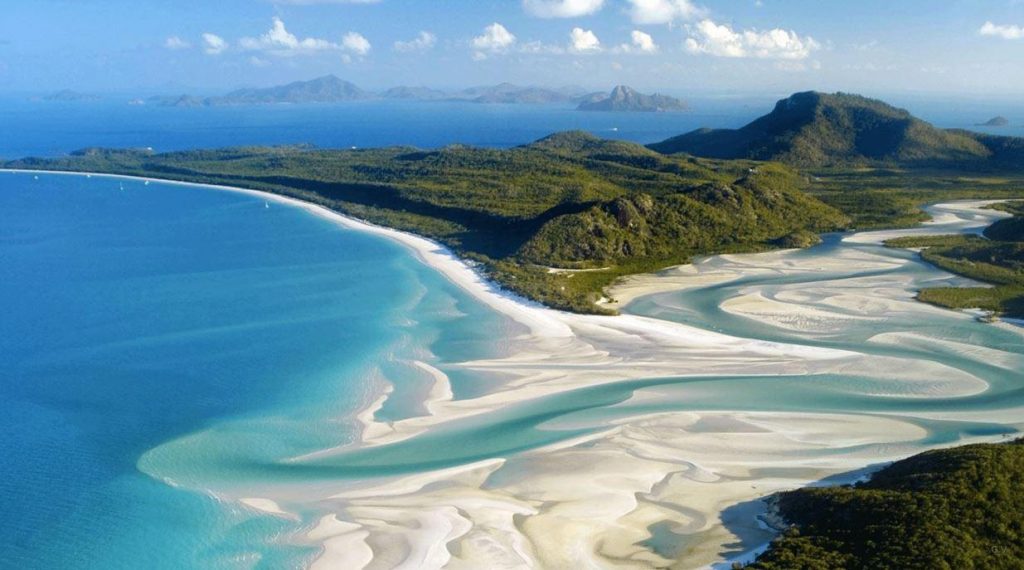
Although this part of Queensland is typically warm and sunny for most of the year, the combination of lower air temperatures and cool sea breezes during August remove any trace of the sometimes uncomfortable humidity that Fraser can experience during the hottest periods. of the year.
Although mornings and evenings can still be cool when the wind picks up, you'll be able to enjoy most of Fraser Island's natural delights without having to fight the crowds during the month of August and continue enjoying a wonderful time relaxing on its many beautiful beaches.
Average August daytime temperatures are a comfortable high of 23 degrees Celsius and approach 24-25 degrees Celsius as the end of the month approaches.
Although this may make Fraser Island's beaches unswimmable for many - both due to its shark-laden nature and the cold water temperature - the island is home to numerous shallow lagoons, lakes and streams that offer excellent swimming. alternative option to cool off on the hottest days.
August also brings with it other natural benefits; It is an exceptionally popular destination for anglers, as the amount of tailor available for catch attracts fishing enthusiasts from all over. The month is also peak season for Fraser Island wildflowers, which add an extra layer of color to what is already a stunning natural landscape.
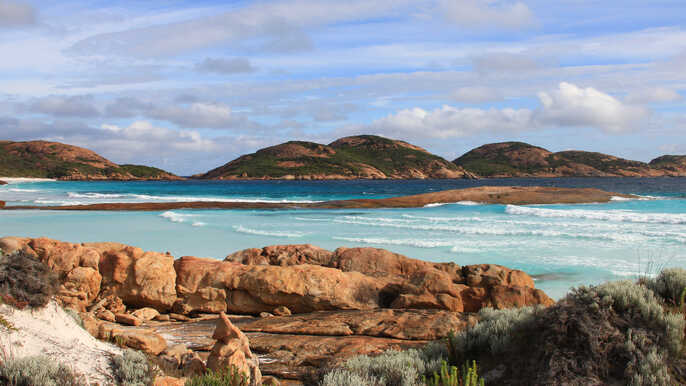
This floral display combines with the weather conditions to make August one of the best times of year to take part in one of Fraser Island's many extensive bush walks. From shorter beach walks to the epic Fraser Island Long March route, a wonderful trip that can be completed in 6 or 8 days, depending on the number of excursions you wish to undertake.
During the ride, you'll get an overview of the island's mix of mangrove forests, crystal-clear freshwater lakes, and other topography that make it such a special place.
However, not everyone will have so much free time on their holiday, and it is good that a good sample of what Fraser Island has to offer can be experienced in a shorter time frame if required.
Although there are day trips, travelers should spend at least one night on the island, as its large size means that only this one area can be covered.
However, day hikers can see a significant number of places such as Lake McKenzie, Eli Creek, the Maheno Shipwreck, and others. Consequently, other Fraser Island must-sees further afield, such as the wonderful Champagne Pools, Indian Head and others, will be missed on a single-day itinerary, so a minimum of two days is highly recommended.
Fraser Island is usually reached by ferry which can take both pedestrians and vehicles (4x4 only) over the water from Hervey Bay, while those with money to spare can book an air charter to land on a runway or on the long beach of 75 Mile Beach. Tour operators also offer 1-3 day tours (see our Hervey Bay tours section for options) that aim to cover most of the island's essentials in their itineraries.
If you're looking for an alternative destination in Australia during August that will help you escape the cold but isn't as commercialized as QLD's other tropical offerings, seriously consider Fraser Island; You will be glad you did.
3. Litchfield National Park, NT
- Average temperatures : 17.8 degrees Celsius to 33.0 degrees Celsius
- Ideal for : Vacationers looking for an outdoor getaway with beautiful natural attractions
- Top things to do : Visit Blyth Homestead; the lost City; Florence, Wangi and Tjaynera Falls (Sandy Creek); see the magnetic termite mounds; bathing in Bluey Rockhole
Kakadu National Park's little, less famous brother, Litchfield National Park in the Northern Territory, is equally spectacular in its own way, and its compact size and easy access from Darwin make it a much more reasonable proposition for explore.
Home to an incredible variety of beautiful environments, Litchfield offers much of the wonder of Kakadu just over an hour's drive from the capital of the Northern Territory.
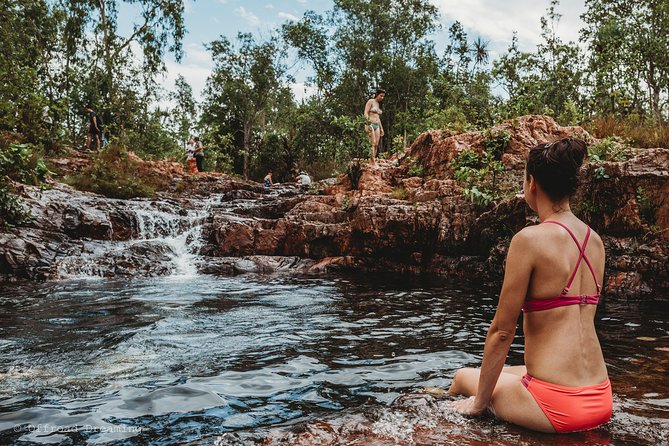
It's a beautiful sight, from the beautiful, clear swimming holes to the steep cliffs, rushing waterfalls, towering termite mounds and other examples of raw, untouched Australia. Therefore, unlike Kakadu, you can enjoy the wonders of Litchfield in a single day.
August in and around Litchfield falls within its dry season - this part of the Northern Territory only has two main seasons, wet and dry as far as the average traveler is concerned - and as a result much more of the area , as well as some additional campgrounds, is open and accessible.
The difference between the TN national parks in the wet and dry seasons is dramatic enough to make them seem like two completely different places, and they are worth visiting during each if you plan to visit again.
Traditionally an area that becomes extremely hot and humid during the more humid summer months, winter becomes peak tourism season for Litchfield as many are drawn from the colder southern states to explore this part of the heart of Litchfield. Australia in much warmer conditions.
The inevitable downside to this favorable weather is that the waterfalls in Litchfield National Park are not as powerful or spectacular as in the wet season, but this is the trade-off for the benefits of more comfortable and predictable weather.
This is particularly crucial for a destination like Litchfield, which relies entirely on the outdoors and will have you walking through some heavily forested areas. August travel time means you'll have to spend much less energy dealing with one of the native nuisances: the dreaded mosquito.
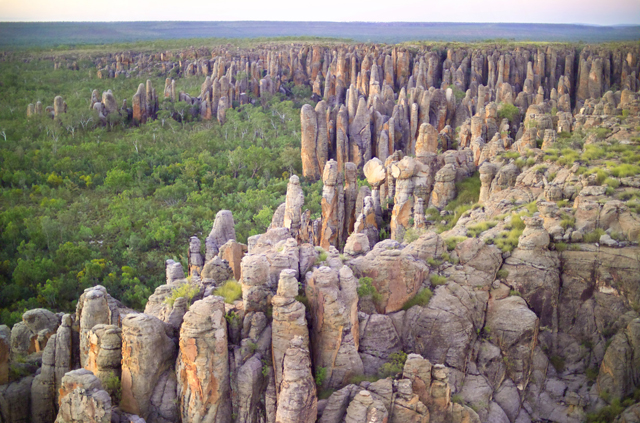
Additionally, the August choice avoids most school holiday periods in Australia, helping to reduce the number of tourists and allowing some of the isolation and seclusion of this natural area to be preserved without having to fight for viewing points or share the pools.
In terms of how to spend your time in Litchfield, you'll be spoiled for choice, and you'll be able to access them all in a relatively short time, as most of the park's main points of interest are located in close proximity to each other. In short, it is a very easy National Park to navigate compared to the immensity of Kakadu.
The main parts of the park that appeal to you will depend on your personal taste and what you are looking for; Swimming in natural water holes, in particular, is one of Litchfield's main attractions; There are some quality swimming spots at Buley Rockhole, and at Florence and Wangi Falls. All of them can be visited in one day, so just determine which one is the least crowded and spend as much time as possible there.
The iconic magnetic termite mounds - hundreds of insect-built structures, often tower-shaped, oriented north to south - can be seen from the main road inland and you will undoubtedly see them along the way, and there are numerous opportunities for short walks and hikes.
Many of these walks are relatively easy and well maintained, and Litchfield National Park has a good range of picnic facilities if you stick to the main tourist routes, making enjoying your own lunch in lovely surroundings be very easy.
There are few day trips from Darwin that compare to Litchfield National Park, and August brings pleasant conditions to what is one of the Northern Territory's must-sees.
4. Cairns, QLD
- Average temperatures : 17.4 degrees Celsius to 26.6 degrees Celsius
- Ideal for : Travelers looking to escape the cold and explore the reef and rainforest
- Best things to do : Snorkel or scuba dive in the Outer Reef; visit Green and Fitzroy Islands; Cairns Botanic Gardens; ride the SkyRail Rainforest Cableway; go whitewater rafting; bungee jumping; or fly in a hot air balloon.
Like Litchfield, Cairns is another popular travel destination where humidity plays a significant role in the level of attractiveness associated with visitors heading there.
Perhaps Australia's most famous destination for those looking to explore all the wonders of the Great Barrier Reef, Cairns' location in tropical north Queensland brings with it all the associated weather and climate conditions.
Aspects such as the aforementioned humidity, regular storms with large numbers of mosquitoes and gnats come into play to varying degrees throughout the year. In a destination where most will want to spend much of their time in, on or under the water, it is especially important that sunshine and lack of rain are the names of the game, and this is where August shines exceptionally well in Cairns .
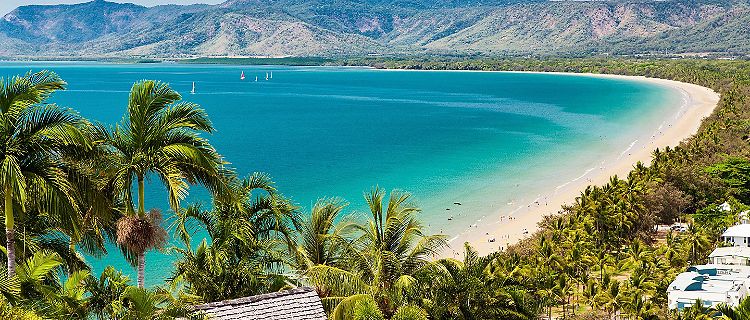
The height of winter is a term that could be applied to many destinations in August, but in Cairns it's easy to shrug it off with an ideal average daily maximum temperature of 26.5°C and the fewest rainy days of any month of the year in the region.
This greater chance of sunny days makes planning an enjoyable trip to the reefs much more predictable and feasible in other months of the year and is a crucial element in not ruining your visit to Cairns.
Given Cairns' popularity as a tourist destination, costs can also be reduced by traveling in August, rather than the busiest July. As a result of the absence of school holidays, prices may still be quite high given the global appeal of Cairns, but it is one less factor to deal with when booking accommodation or excursions. This also avoids most of the peak overseas/international reef season.
Although traveling to Cairns at a relatively colder time of year may have the drawback of lower water temperatures, when visiting the Great Barrier Reef on a day trip most tour companies provide wetsuits. neoprene as part of your packages if requested.
There are also numerous facilities in and around Cairns where wetsuit hire is offered. If you are one of those who are sensitive to cold, it is worth investing in them. The month of August in Cairns is also usually quite windy, which can add extra chill when getting out of the water.
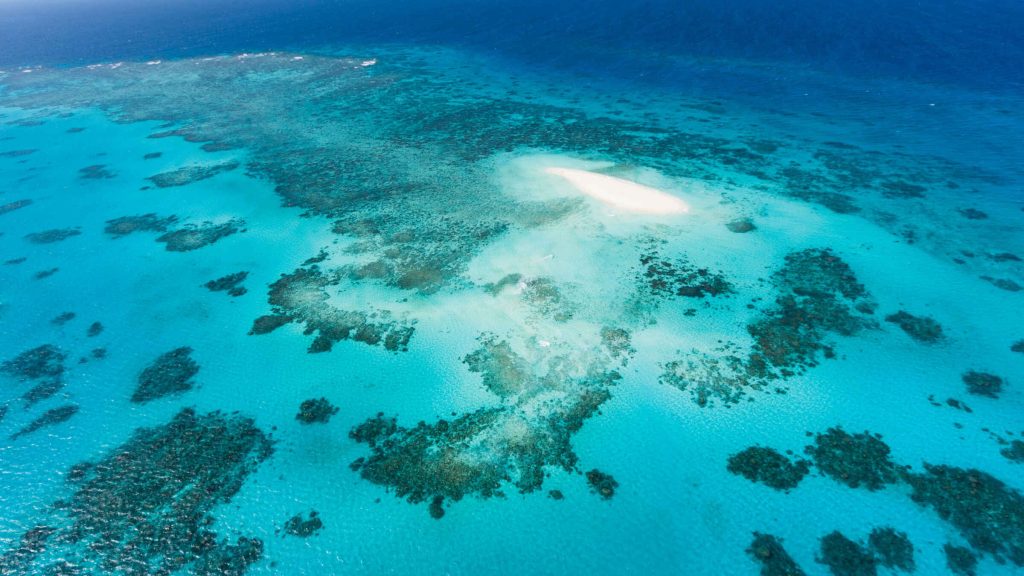
Of course, it's not necessary to spend all your time in Cairns; Excursions to islands such as Green Island and Fitzroy Island attempt to provide both land and water entertainment. Simply lying on the beach in the sunshine is a welcome escape from the cold of most of Australia's southern states.
Likewise, the World Heritage-protected rainforests surrounding Cairns offer a completely different world to the Reef to explore, with plenty of possibilities for travelers to do so in a variety of ways. Rainforest humidity also reduces during this period, and many activities, from the SkyRail Rainforest Cableway to river cruises and easy guided walks, benefit from these favorable conditions.
Most people visiting Australia for the first time will want to include Cairns in their itinerary at some point, and if you want to experience the region in what is perhaps its best balance of climate, crowds and price, then August ticks all the appropriate boxes.
5. Port Stephens, NSW
- Average temperatures : From 9.8 to 18.9 degrees Celsius
- Ideal for : Wildlife and landscape lovers
- Best things to do : View from Gan Gan Viewpoint; sandboarding; take a cruise with dolphins; snorkel at Fly Point; learn to surf; go quad biking; Toboggan Hill Park
The Central Coast of New South Wales is another highly underrated tourist destination that brings many of the benefits of the more famous destinations in South East Queensland, without the crowds and with generally cheaper prices overall.
Port Stephens is perhaps its most picturesque location, this large natural harbor in the Hunter region offers plenty of fun both in and out of the water for those August days when it feels too cold to swim.
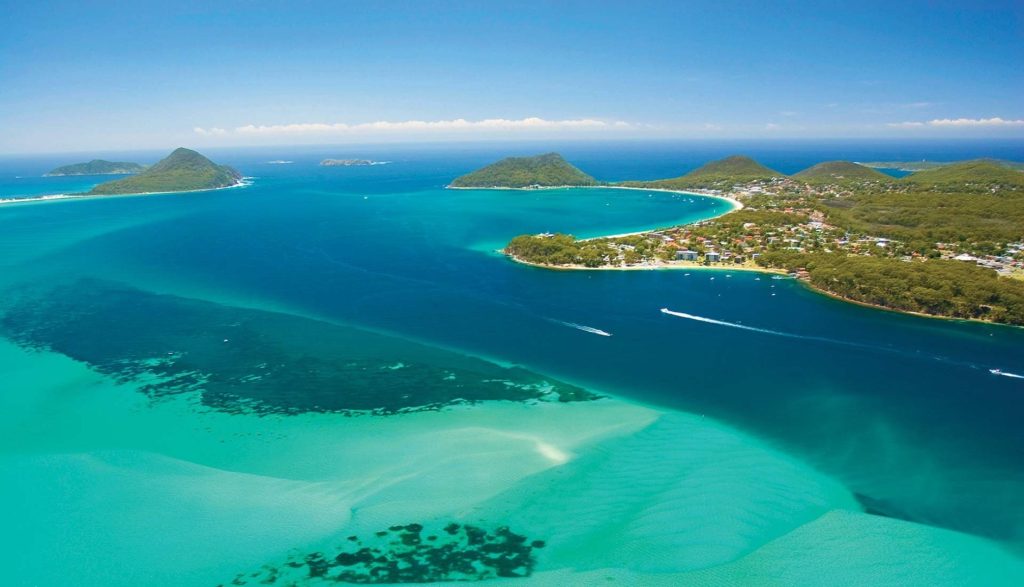
Located just over two hours north of Sydney (or much less from Newcastle), it's an easy trip that brings with it numerous natural rewards for the aspiring visitor.
The reasons why Port Stephens' aquatic offering is so popular are several; Not only are they clean, spacious and picturesque to explore, but they are also teeming with marine life that comes to the fore during August and some of its surrounding months.
Whale watching is a big draw for the Port Stephens region, and the beginning of August is right in the heart of the migratory period for these huge but gentle giants of the ocean.
This makes whale watching one of Port Stephens' most popular activities for tourists, and can be done both on land (within the dense Tomaree National Park) and on a series of whale watching cruises run by local operators. . Whales are not the only mammals that populate the waters of Port Stephens, as it is also home to more than 100 bottlenose dolphins.
Other water experiences also play a big role in the activities scene here. Surfing is very popular and classes are offered at several local surf schools, the fishing is great with both land and sea fishing possibilities, and even snorkelling is more than viable at the popular Fly Point which is located within the Halifax Park Aquatic Reserve that even beginners can enjoy.
There is a wide variety of fish and marine life, as well as a solid concentration of crustaceans and sponges that add an extra layer of variety to the seascape. The other most notable natural feature of Port Stephens is its extensive sand dunes, and if there is one activity emblematic of Port Stephens as a whole, it is probably sandboarding.
It's a simple pleasure that can be enjoyed by all ages, and the moderate August weather means that the impact of the sun on the dunes and their reflection is somewhat minimized if you plan to spend several hours here.
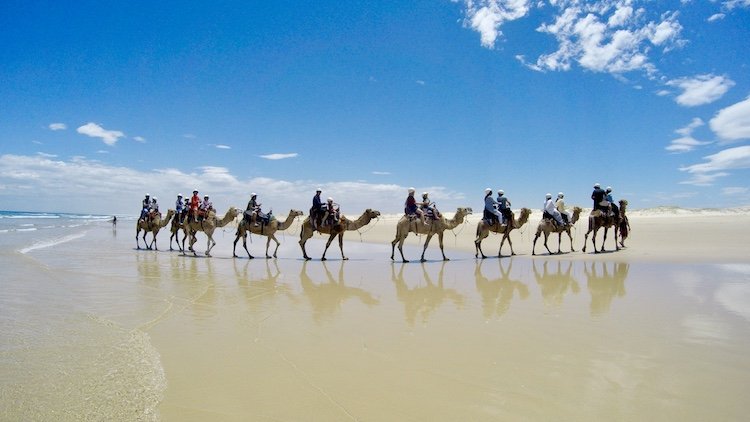
These dunes are of impressive size - they are the largest of their kind in the southern hemisphere - and can be reached via 4x4 excursions that also offer the optional opportunity to learn about some of the history and geography of the surrounding area. .
Finally, August's famously clear skies make one of Port Stephens' must-do experiences, the climb to Gan Gan Viewpoint, even more enjoyable. Clear days, the most impressive panorama in the region, offer great visibility from which you can contemplate the beautiful blue waters of the bay and its various islands, the surrounding vegetation and part of the city itself.
If you add to all of the above the possibility of finding uncrowded stretches of beach that you can practically have to yourself, Port Stephens' idyllic balance between natural offerings and lack of excessive commercialization makes it an easy destination to recommend. for those who want a getaway by the sea.
6. Uluru, NT
- Average temperatures : From 5.5 to 22.6 degrees Celsius
- Ideal for : The ultimate Australian outback getaway
- Best thing to do : Watch the sunset and sunrise at Uluru; take a camel ride; experience the Sound of Silence; take a helicopter flight at Uluru.
Perhaps more than any other destination, apart from the Great Barrier Reef, this is the one we are asked the most about when is the best time to visit. One of our country's most amazing and internationally recognized icons, Uluru/Ayers Rock is a place where the term "bucket list item" is not just a cliché, but 100% true.
Located almost exactly in the center of the Australian continent, the massive stone structure combines astonishing scale with isolation and cultural significance in a unique package that cannot be found anywhere else in the world.
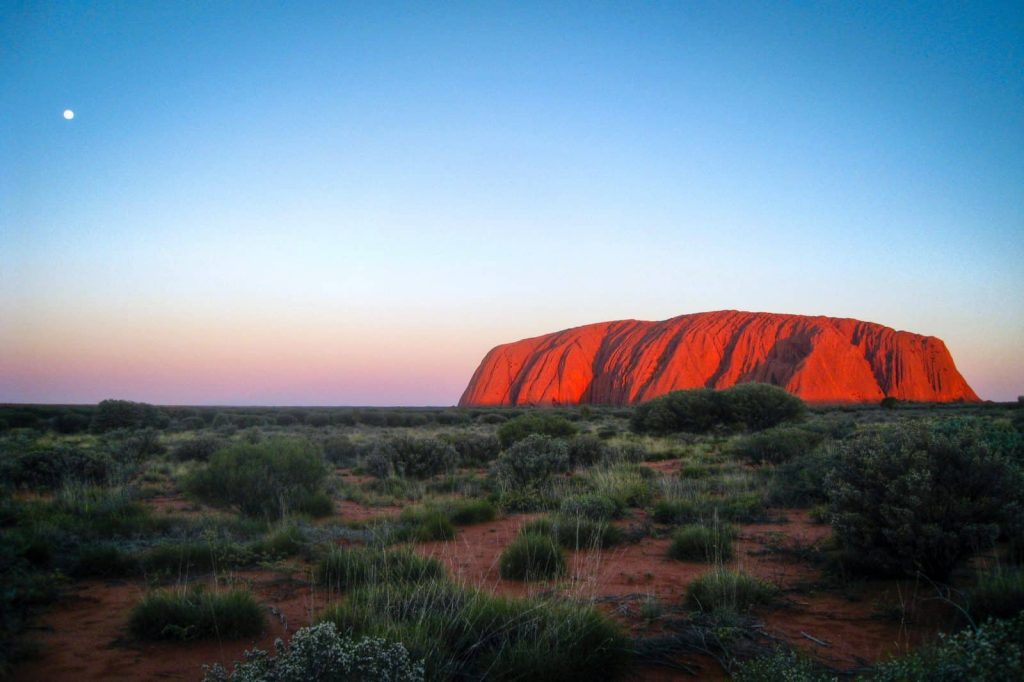
Uluru's isolation is one of its most attractive features, but it also makes traveling to the rock a struggle, and it's important to make sure you travel at the best possible time, which we think is the tail end of August for a number of reasons.
Being in a place that is basically a desert, weather and climate come into play in the Uluru region as much or more than any other destination on this list. Therefore, it is recommended to avoid both summer and the harsh middle of winter (July in particular), for different reasons.
Although most people's initial concern is based on the heat, it is the cold that can catch most people off guard, as the complete lack of humidity in the area can lead to some really frigid nights, since subzero temperatures are not uncommon.
The last weeks of August alleviate this situation somewhat, as the minimum temperatures are around 10 degrees Celsius, although pleasant, while the daytime heat disappears to give rise to a wonderfully comfortable average maximum of 28 degrees Celsius.
The flora and fauna of the region have also begun to move into their recovery phase around this time, serving to add another layer of color and life to what is already a wonderful part of the country. Wildflowers begin to dot the area, and their greenery contrasts beautifully with the reddish tones of the surrounding landscape and Uluru itself in particular. Plus, with no school holidays, you'll save some money on your trips.
It's inevitable that an adventure in the Outback will be accompanied by flies, but during the warmer months of the year, a face net is almost mandatory.
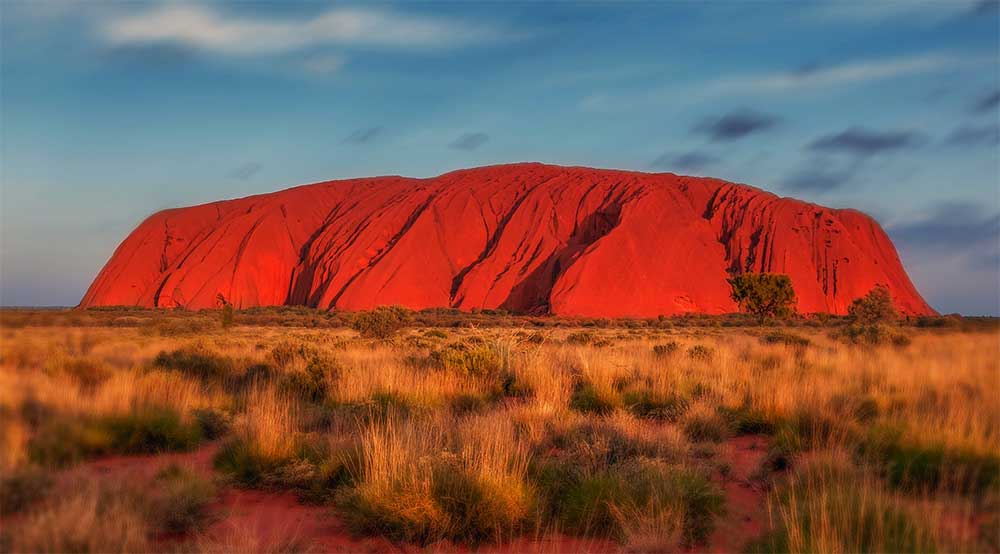
The month of August and its associated season help to alleviate this greatly, and although you will no doubt still encounter some, fly numbers are much more manageable.
If you combine all of these elements, you'll probably have much more energy to enjoy a full day of exploring this iconic location. Walk around the base, go on a hike, take a camel ride, visit Kings Canyon and Kata Tjuta/The Olgas, and enjoy stargazing under incredibly clear skies, all without breaking a sweat.
Uluru is a must-see itinerary for every traveler once in a lifetime, so aim your trip towards the end of August and you'll leave with an unforgettable, comfortable trip that will stay with you forever.
How much do you want to SAVE on your trip?
When you find your ideal destination in this article, check out the best exclusive DISCOUNTS and OFFERS to organize it.
▷ Conclusion: Go out, travel and live your life to the fullest.
This year, treat yourself to a break from the ordinary and seek an adventure abroad. You'll come back refreshed, rejuvenated and ready to bore all your friends with travel stories.
Any time of year is a good time to travel. Discover the best places to travel by month:
If you want to read other articles similar to Best destinations to travel to Oceania in August. You can visit the category August.
Leave a Reply







Related Posts